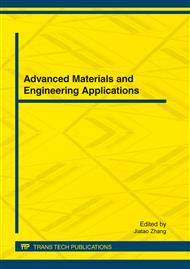p.140
p.144
p.148
p.153
p.157
p.162
p.167
p.172
p.181
The Synthesis of Polystyrene-B-Poly(4-Vinylpyridine) and its Application
Abstract:
a system of polystyrene and polystyrene-block-poly(4-vinylpyridine) (PS-b-P4VP) were synthesized by using living free radical in the presence of 4-hydroxyl-2, 2, 6, 6-tetramethylpiperridine-oxyl-1(HTEMPO•) and (BPO). The polystyrene and diblock copolymers were characterized by gel permeation chromatography (GPC) and atomic force microscope (AFM). The results suggested that the polymerization of styrene in the presence of 4-hydroxyl-2, 2, 6, 6-tetramethylpiperridine-oxyl-1(HTEMPO•) and benzoyl peroxide (BPO) can be prepared with molecular weight distribution in the range of 1.15 to 1.25. The polystyrene with living groups can continuously initiate the living free radical polymerization of 4-Vinylpyridine to form the polystyrene-block-poly (4-vinylpyridine) with molecular weight distribution in the range of 1.08 to 1.35. The AFM of diblock indicated the diblock copolymer(PS-b-P4VP) is a good compatibilizer for PS and P4VP.
Info:
Periodical:
Pages:
157-161
Citation:
Online since:
March 2012
Authors:
Price:
Сopyright:
© 2012 Trans Tech Publications Ltd. All Rights Reserved
Share:
Citation:


